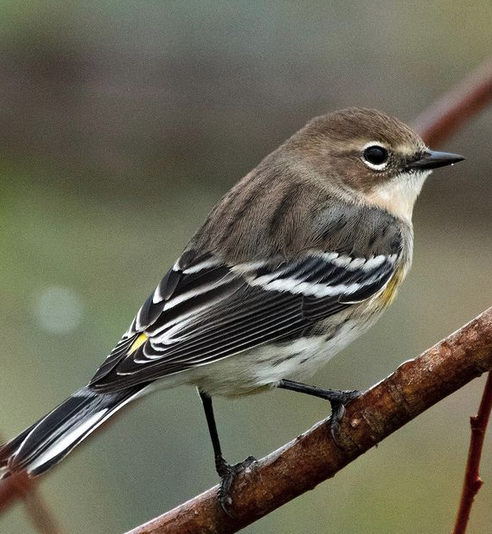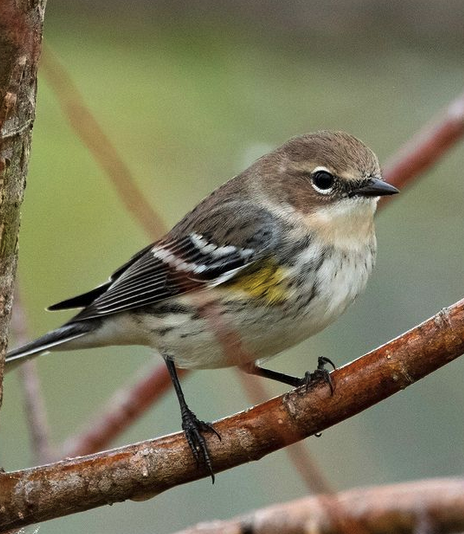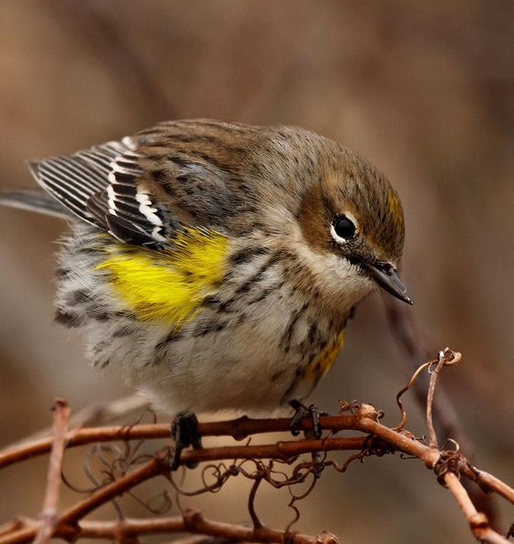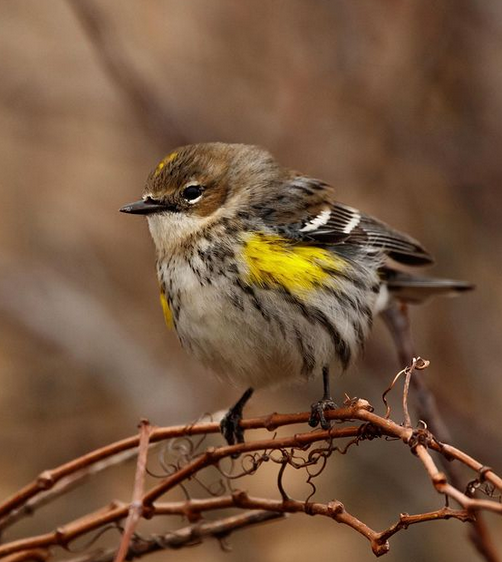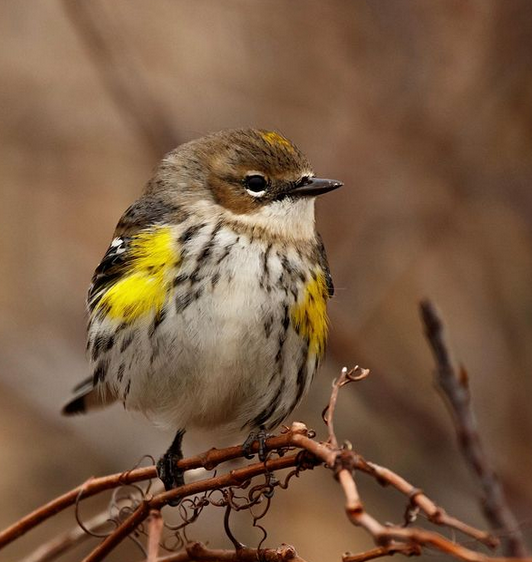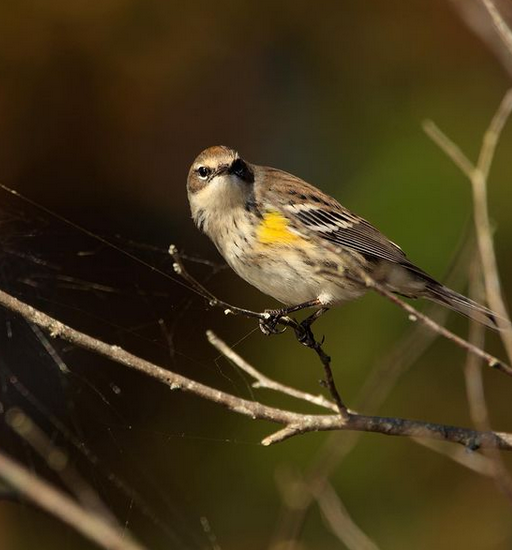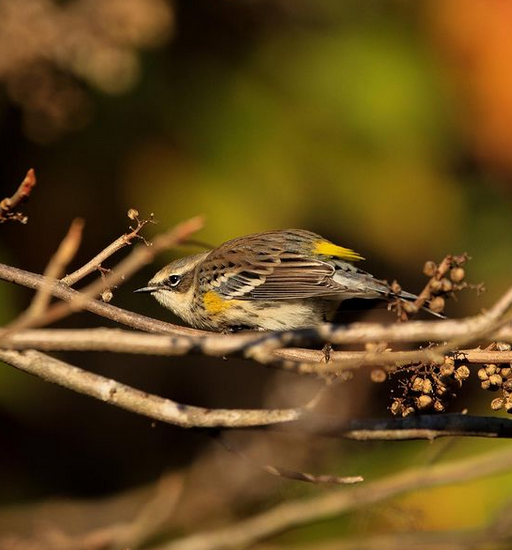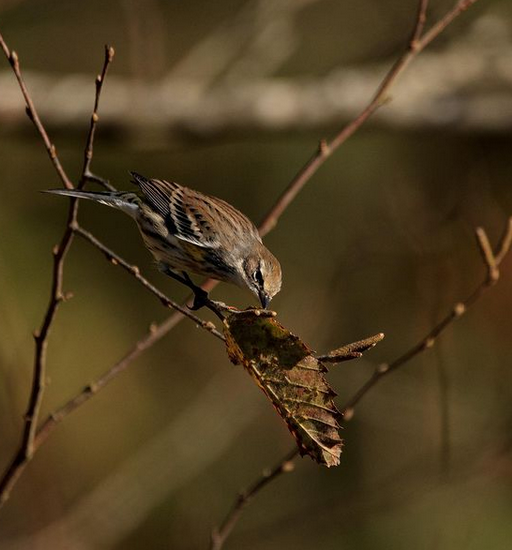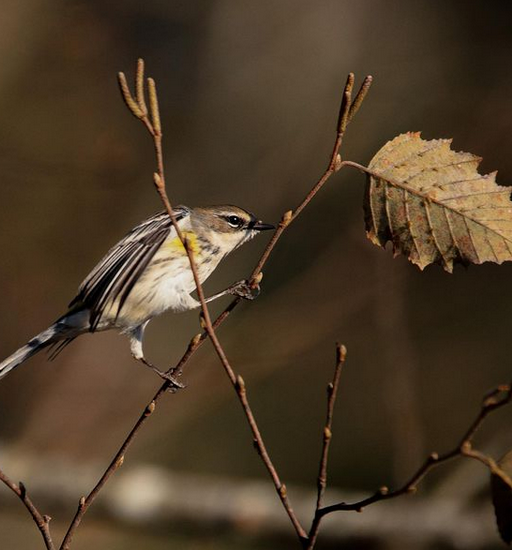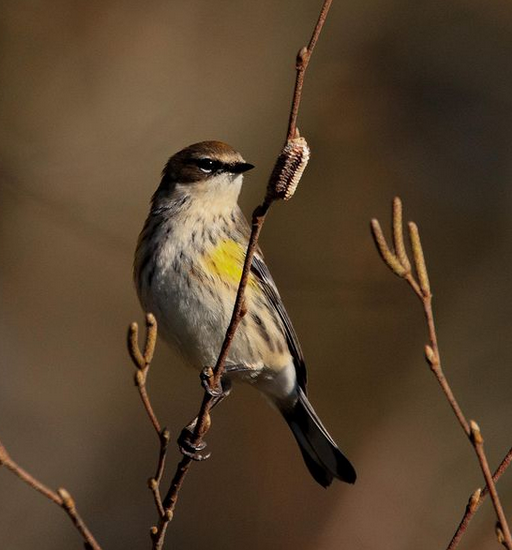By Sally Siko
With spring migration underway in NC, many of our winter resident birds are headed north for the breeding season ahead.
One such species are the Yellow-rumped Warblers.
During the cooler months, these guys are one of the most commonly found birds in central North Carolina. Now that spring is here, male Yellow-rumps have undergone a drastic change in their appearance going from drab brown and white to a striking black, white and yellow combo.
The change means that soon they’ll be heading north to their breeding grounds within a few days so if you’d like to see one dressed in these bold colors, ya gotta get out there ASAP.


While there are sporadic reports of them breeding in the higher elevations in western part of the state each summer, Yellow-rumped Warblers are most commonly found throughout NC from late September through mid May.
They favor areas near ponds, streams and creeks and especially where Wax Myrtle trees are present.
They have a varied diet, feeding on insects, berries, and sometimes even seeds.
You can even entice them to visit your backyard by offering fruit flavored suet and mealworms at your feeders. This versatility helps them survive in different habitats throughout their range throughout the year.
Pretty neat huh?
Photos by @sally_siko of @bestlife_birding on my mighty mirrorless monster, the @canonusa #R5





